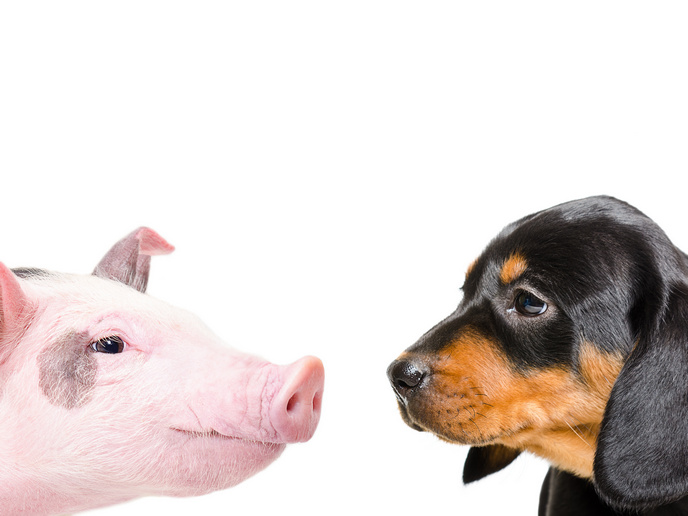What pigs cannot do, besides fly
Not all domestic animals can direct a person’s attention to an interesting location, according to research supported in part by the EU-funded VOIMA project. A team of scientists from VOIMA project host Eötvös Loránd University (ELTE), Hungary, sought to find out if domestic pigs and dogs would show their owners where a treat that was out of their reach was hidden. Their findings were published in the journal ‘Scientific Reports’. “Domestic animals seem especially predisposed to referentially communicate with humans,” states ELTE PhD student and study first author Paula Pérez Fraga in a news item posted on ‘SciTechDaily’. “However some human-socialized wild animals can do this as well, thus domestication might not be key for this communicative ability to emerge after all. We noticed that a shared characteristic among these species is that they use many visual signals when communicating with their conspecifics. Could this be a necessary characteristic for animals to engage in referential communication with humans?” Dogs and pigs were chosen for the investigation as examples of animals that rely heavily on visual communication (dogs) and animals that do not (pigs). ELTE researcher and study senior author Dr Attila Andics describes the experiment: “The animals walked into a room where they were either alone with the owner, alone with a food reward hidden by an experimenter, or together with the owner and the reward. The reward was unreachable for the animal but reachable for the owner.”
Not the right characteristics for this type of communication
“We expected an increase of referential communicative behaviors when both the owner and the food reward were present, meaning that the animal was directing the attention of the human to the food location,” Dr Andics states. The team found that if the owner was in the same room as the domestic animal, but there was no treat in the room, pigs paid this person as much attention as dogs did. However, if a treat was also present in the room, only dogs tried to direct their owner’s attention to the spot where it was hidden. In contrast, pigs tried to find a way to get the treat themselves. Is every domestic animal capable of directing a human’s attention to an interesting location? The research supported by VOIMA (Voice and speech perception across mammals: a comparative study of humans, dogs and pigs) says no. “We suggest that pigs might lack important characteristics that are crucial for the emergence of this sort of communication,” observes Pérez Fraga. “Although we know that dogs are especially skillful in communicating with humans, other animals like horses, cats, and even kangaroos can referentially communicate with us, and all of them rely heavily upon visual communication when interacting with their mates. Pigs, on the contrary, don’t.” For more information, please see: VOIMA project
Keywords
VOIMA, dog, pig, domestic animal, attention, human, communication



